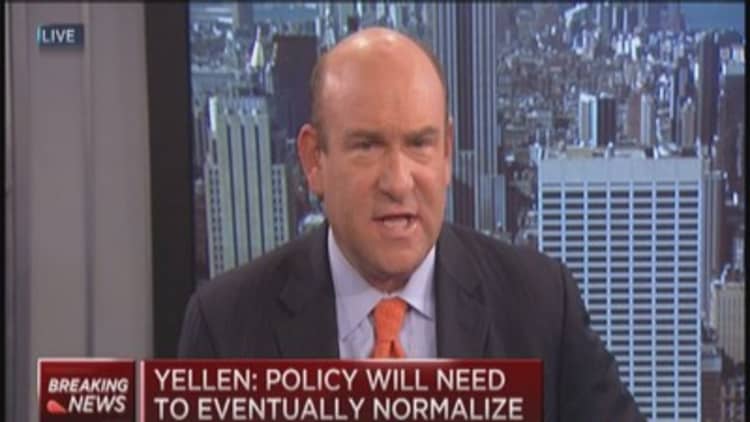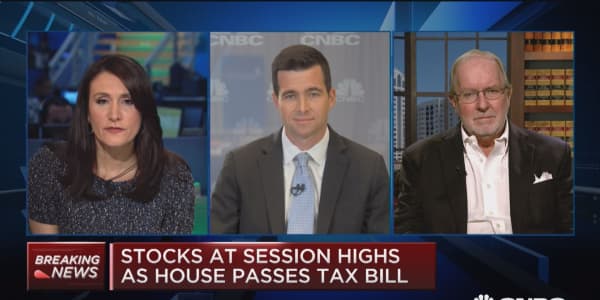The market turmoil of mid-October seems all but forgotten now, but the worries over similar recurring events remain.
Liquidity events, the likes of which sent bond yields and stock prices spiraling lower on Oct. 15, will be one of the market's main worries as it adjusts to the end of Federal Reserve "money printing" and fewer buyers in the bond market.
"As investors we have to think not just about the traditional risk metrics like credit risk but other elements of risk," Janus Capital's Gibson Smith said in an interview at his Denver office, just a short drive away from the Schwab IMPACT conference where the firm met with fellow investment professionals.
"Liquidity risk is much more robust ... than it's ever been," said Smith, chief investment officer for fixed income.

Read MoreThese advisors hope for more volatile times
Spurred by a convergence of fears that included a global growth slowdown, panic over the Ebola virus and uncertainty about Fed policy, stocks on Oct. 15 lost more than 400 points on the Dow Jones Industrial Average at one point and bond yields plunged to 2014 lows. The 10-year Treasury note yield briefly fell below 2 percent, then snapped back.
Regulators continue to investigate what exactly happened on that day, though, as much of the damage seemed due to sudden dearth of buyers in the bond market.
In a recent analysis of Oct. 15 trading activities, Themis Trading said the event resembled the so-called flash crash in 2010 that sent the Dow off nearly 1,000 points, only to recover quickly:
The bond market appears to have fundamentally changed and no longer seems to have the built-in liquidity shock absorbers provided by traditional dealers. Some will say that Dodd-Frank (banking reform legislation) caused this since dealers can no longer hold as much inventory. Some will say that this is just the natural evolution of electronic trading. But something is wrong when the safest bonds in the world experience such a rapid price move in such a short time period.
Smith said the event should serve as a warning shot that the markets don't always behave according to plan, and adjustments to policy normalization may not be smooth.
Read MoreR.I.P. QE: Fed shuts off the printing presses
"In society we take for granted that markets are liquid, and we tend to forget there are episodes where there is no liquidity," he said. "We have become complacent that there is always a clearing price. I do think it's an issue that faces the capital markets now in a big way."
Just as regulators installed market circuit breakers that have helped mitigate damage from ensuing flash crashes in stock prices, Smith expects work to be done in the future on addressing such events in the fixed income space.
"Someone will come up with a solution that helps improve liquidity in the market, that brings buyers and sellers together," he said. "I wish I was that person who solves it. Whoever does is going to be in a really great position, but I do think it will be solved."





